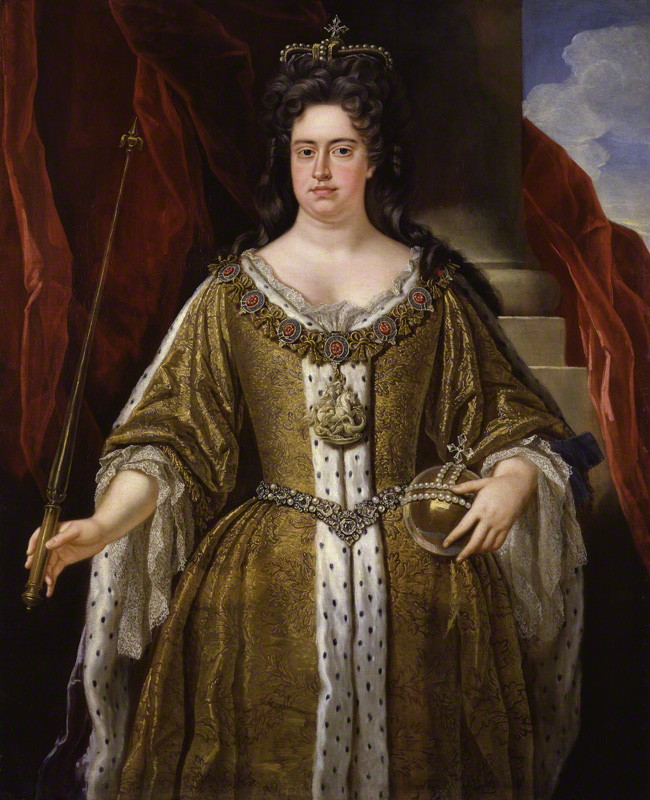Queen Anne (1665-1714) acceded to the throne on 8 March 1702. To mark her accession, the Guildhall in London commissioned John Closterman (1660-1711) to paint a portrait of the new queen. The original has disappeared, but a early study survives from Closterman’s studio. Anne appears in her coronation robes, reminiscent of the famous coronation portrait of Elizabeth I (1533-1603). She is crowned, and clasps her orb and sceptre.
The Poet Laureate, Nahum Tate (1652-1715), was inspired by the painting to write his panegyric, Portrait-Royal (1703). Writing in the voice of the Muse of Poetry, Tate expresses his inadequacy compared with Closterman’s artistic skill:
How starved our rhetoric, and our style how faint
To pictured passion and pathetic paint!
To those warm colours, which here I behold,
My tropes are flat, my metaphors all cold:
Wit’s sprightly air is lost; her varnish flies,
And all the lightening of her fancy dies.
Painting alone presents victorious bright,
With radiant glories of resistless light,
To sally, seize, and captivate the sight.
